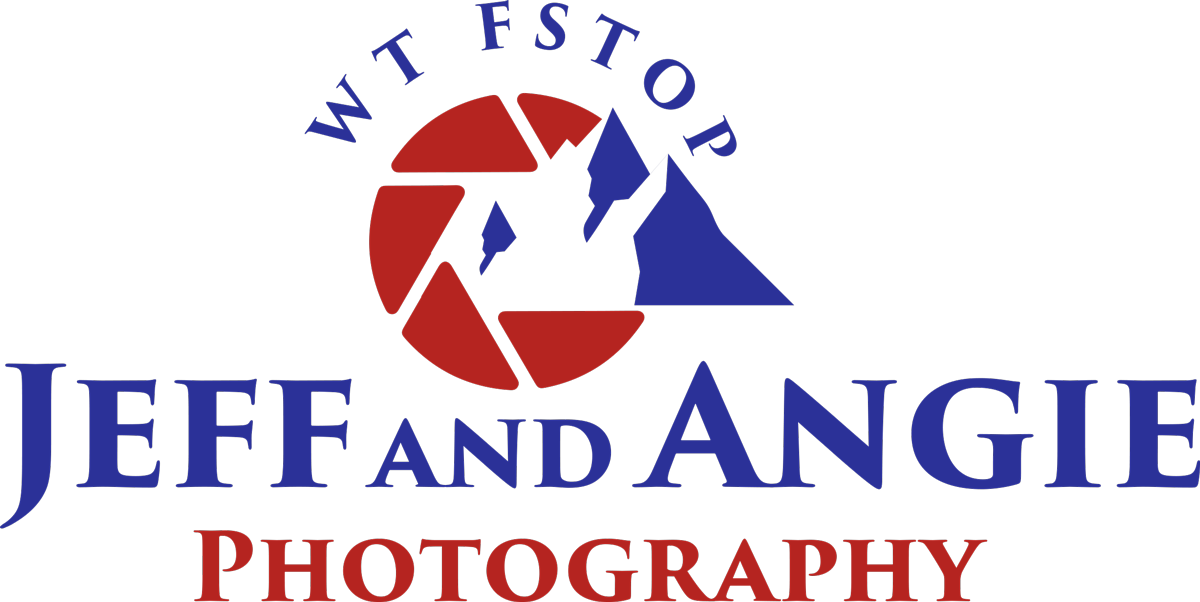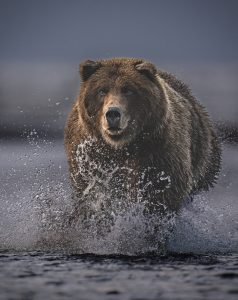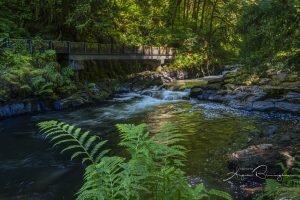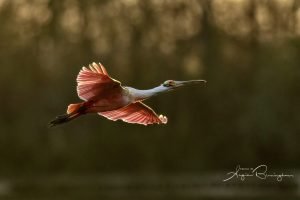Manual mode and why you should use it.
There are a few reasons why you should shoot in manual mode on your camera.
aperture f4 – Shutter 1/1000 ISO 4000. Taken in low light.
First, it gives you more control over the final image. You can adjust the shutter speed, aperture, and ISO to get exactly the look you are going for.
Second, it forces you to slow down and really think about each shot. In automatic mode, it's easy to just snap away without really paying attention to what you're doing.
But when you're in manual mode, you have to be more intentional about every click of the shutter. And finally, you might just find it more enjoyable. It's like a little puzzle to figure out each setting, and I know I love the challenge of getting it just right. So those are a few of the reasons why to shoot in manual mode. The more you use manual mode the quicker you will get. I typically Set my aperture and shutter then just the ISO as light conditions change. I will also adjust the shutter and aperture to achieve different looks of the same subject.
When most people first start photography,They use the automatic mode on their cameras. It is easy and carefree, just pointed and shot. But you quickly realized that the automatic mode is limiting your creativity.You want to be able to control every aspect of your photos, from the aperture to the shutter speed. It is challenging at first, but it is also immensely rewarding.
Now that you will be shooting in manual mode you will get what you wanted and or the sunset/sunrise as you saw it. With some practice you can even capture photos of things your naked eye has never seen. More on that in another Vlog stay turned and subscribe.
What is aperture? And Why is it important?
Aperture is one of the key settings on your camera, and it plays a big role in how your photos turn out. But what exactly is aperture, and why is it so important? Aperture refers to the opening in your camera lens through which light passes. The size of the aperture affects how much light enters the camera, and this in turn affects things like shutter speed, ISO, and depth of field.
A wider aperture (a small f-stop number) lets in more light and results in a shallower depth of field, while a narrower aperture (a large f-stop number) lets in less light and gives you a greater depth of field. So why is this important? Depending on the effect you want to achieve, you'll need to choose an appropriate aperture setting.
For example, if you're shooting a landscape shot, you'll probably want to use a narrower aperture so that everything appears sharp and in focus. On the other hand, if you're taking a portrait, you might want to use a wider aperture to blur the background and make your subject stand out. So the next time you're behind the camera, take some time to experiment with different aperture settings to see what effects you can achieve.
Aperture is one of the three elements that control the amount of light that enters your camera. But what does aperture actually do? Well, when you decrease the size of your aperture, you let in less light. This might not seem like a big deal, but it actually has a big impact on the final image. A smaller aperture results in a shallower depth of field. This means that objects in the foreground will be in focus, while objects in the background will be blurry.
This can be used to create beautiful portraits with dreamy, soft backgrounds. Alternatively, a larger aperture results in a greater depth of field. This means that both the foreground and background will be in focus. This is ideal for landscape shots where you want everything to be sharp and clear. So, as you can see, aperture is a pretty important element of photography! Here are some examples.
Large Aperture for good depth of field ( focus) Aperture f10 – shutter speed 1/20 – ISO 100
Small Aperture to up shutter speed in low light and to get shallow depth of field ( Focus) Aperture f4 – Shutter Speed 1/2000 – ISO 2000
What is shutter speed, and why is it important?
Shutter speed is the length of time that a camera shutter is open to expose light into the camera sensor. It is measured in seconds or fractions of a second. A shorter shutter speed will result in a photo with less light, but a longer shutter speed will result in a photo with more light.
The amount of light that is let in during exposure depends on the intensity of the light source and the surface area of the aperture opening. A low-light situation (like nighttime) will require a longer shutter speed to let in more light, whereas a bright sunny day will require a shorter shutter speed.
Shutter speed also determines how much motion blur will be in your photo. A fast shutter speed (like 1/1000 of a second) will freeze action and result in a sharp image, while a slow shutter speed (like 1 second) will capture motion and result in a blurred image.
There is no “correct” shutter speed, but understanding how it works will help you to take better photographs. Practice experimenting with different shutter speeds to see how it affects the final image.
Shutter speed is a measure of the amount of time that the shutter is open while taking a photo. A longer shutter speed will result in a brighter image, but it will also increase the chance of blurriness if the subject is moving. A shorter shutter speed will produce a darker image, but it will be less likely to be blurry. The choice of shutter speed is an important factor in photography, and it can be used to create a variety of effects.
For example, a slow shutter speed can be used to capture the blurred movement of water or wind, while a fast shutter speed can be used to freeze a moment in time. In general, faster shutter speeds are better for capturing action, while slower shutter speeds are better for capturing detail. Experimentation is the key to finding the right shutter speed for each situation. Look at the images above the slow shutter speed slowed the water down to make it smooth and soft and the fast shutter speed on the bird froze the bird in flight.
What is ISO, and why is it important?
When you shoot photos in low light, you need a high ISO speed to prevent blur. ISO speed is a measure of a camera sensor's sensitivity to light. The higher the ISO speed, the less light you need to capture a clear image. However, high ISO speeds can also produce more digital noise, or graininess. As a result, it's important to find the right balance for your needs.
For example, if you're shooting fast-moving subjects, you'll need a high ISO speed to prevent blur. On the other hand, if you're shooting a still subject in low light, you may be able to get away with a lower ISO speed. Ultimately, it's up to you to experiment and find the right settings for each situation. But understanding ISO speed is an important part of getting great results.
ISO speed is a measure of how sensitive a film or digital sensor is to light. The higher the ISO speed, the more sensitive it is, and the less light is needed to produce an image. This can be handy in low-light situations, but it comes at the cost of increased noise or graininess in the image. In general, it's best to use the lowest ISO speed possible to get the clearest image possible.
However, sometimes using a higher ISO speed is necessary in order to get a usable image. In these cases, it's important to know what you're doing in order to minimize the impact on image quality. With digital cameras, it's often possible to adjust the ISO speed after the fact, which gives you more flexibility when it comes to getting the perfect shot.
Putting it all together
Aperture, shutter speed, and ISO are the three pillars of photography. Aperture is the size of the opening in your lens, shutter speed is how long the shutter is open, and ISO is how sensitive your sensor is to light. The perfect photo requires a balancing act between these three factors. A wide aperture will result in a shallow depth of field, which can be used to create dramatic portraits with blurred backgrounds.
A fast shutter speed will freeze action, while a slow shutter speed can be used to create an intentional blur. And a high ISO will help you take photos in low light without sacrificing image quality. By understanding how these three elements work together, you can take your photography to the next level.
Aperture, shutter speed, and ISO are the three main settings that determine how your photo will turn out. Aperture is how much light comes into the camera. Shutter speed is how long the shutter is open. ISO is how sensitive the camera sensor is to light. When you're taking a photo, all three of these settings need to be considered in order for the photo to turn out well exposed.
A good rule of thumb is to start with your aperture first, then your shutter speed, and then your ISO. Apertures range from f/1.4 (for low light) to f/22 (for bright conditions). Shutter speeds can range from 1/4000 of a second (for action shots) to 30 seconds (for low light or night shots). ISO can range from 100 (low light) to 12800 (bright conditions). So when you're taking a photo, think about how much light is available, and what kind of photo you're trying to take, and then adjust your aperture, shutter speed, and ISO accordingly.
To look up your camera and the recommended max. ISO follow this link and search for your camera.
My Sony A1 Recommended high ISO is 3163 ISO but from experience and exposure to the right I am able to push it to 12,800 ISO in some situations.
My Sony A74 Recommended high ISO is 3379 ISO but from experience and exposure to the right I am able to push it to 12,800 ISO in some situations.
If you would like to book a class with me just contact me here



